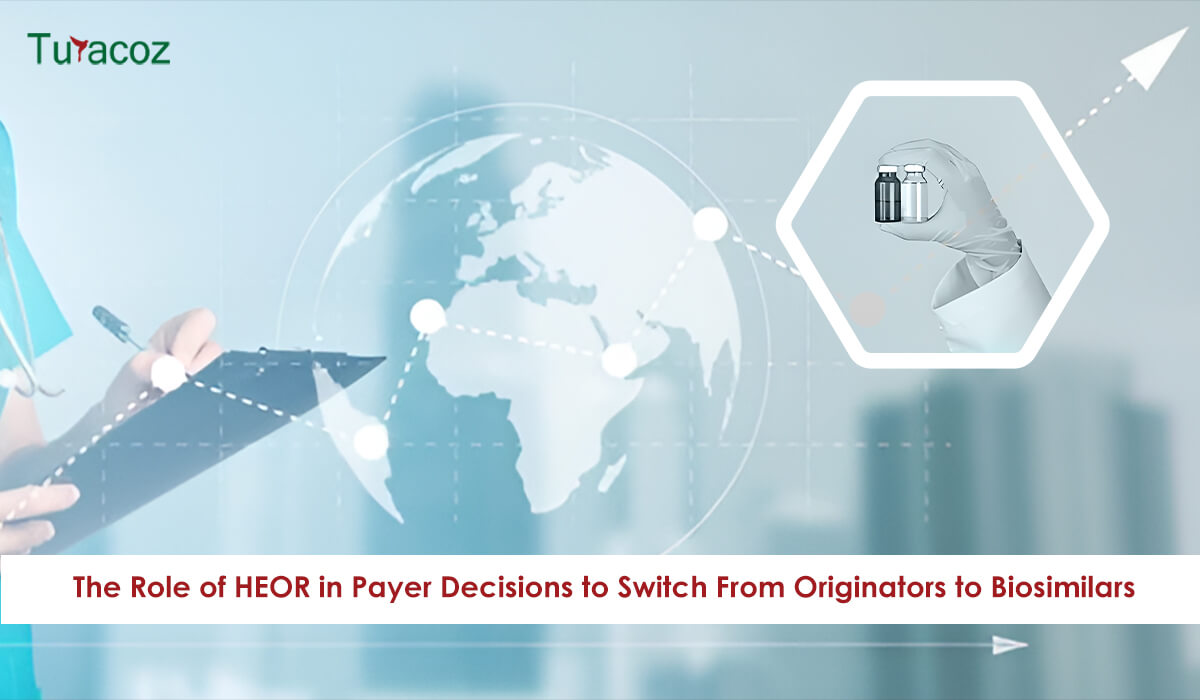
Biosimilars—biologic medicines that are highly similar to FDA-approved originator biologics—offer a cost-effective alternative without compromising clinical efficacy.1,2 Since the first U.S. biosimilar approval in 2015, however, their market adoption has progressed more slowly than expected, despite a steady increase in FDA approvals and their proven safety and effectiveness.3,4 Payers have been cautious in fully embracing biosimilars, even though they are pivotal in reimbursement decisions and prescribing patterns. Understanding the barriers to biosimilar adoption and exploring how Health Economics and Outcomes Research (HEOR) can address these challenges is crucial for unlocking the full potential of biosimilars in transforming healthcare access and affordability.
Why Are Payers Hesitant to Adopt Biosimilars?
Several key challenges slow biosimilar adoption among payers:4
These concerns have created a cautious environment, slowing down the transition from originator biologics to biosimilars. This is where HEOR plays a pivotal role by generating comprehensive evidence that addresses payer concerns through cost-effectiveness analyses (CEA), budget impact models (BIMs), and real-world evidence (RWE).
How HEOR Supports Biosimilar Adoption
The value of biosimilars, in comparison to originator biologics, can be assessed through CEA, which considers both their lower costs and comparable clinical efficacy.
For instance, CEA conducted in Canada for the treatment of metastatic colorectal cancer found that the biosimilars MVASI® and Zirabev® offered annual cost savings of €6379 compared to the originator drug, Avastin, without compromising survival outcomes. The study also supported the initial policy decision to mandate using bevacizumab biosimilars over the originator formulation. This approach helped reduce budget allocation toward bevacizumab and facilitated more efficient resource allocation while maintaining effective care.5 These savings highlight the potential for biosimilars to reduce healthcare expenditures without compromising patient outcomes.
While CEAs assess value, BIMs estimate the actual financial consequences of adopting biosimilars on healthcare systems. BIMs help payers understand potential cost savings and resource allocation implications, which are critical for reimbursement decisions.
The practical impact of BIMs is evident in several European countries. The introduction of biosimilar adalimumab and tocilizumab across seven European nations—including the UK, Germany, and France—was projected to yield cumulative savings of €462 million and enable treatment for an additional 65,593 patients.6 Similarly, a U.S. study on biosimilar adalimumab showed that faster conversion rates from originator to biosimilar led to greater savings, with cumulative savings reaching $28.8 million in a fast-conversion scenario.7 This demonstrates that not only the decision to adopt biosimilars but also the speed of adoption impacts financial outcomes.
By leveraging RWE, researchers can better understand the clinical effectiveness and safety of biosimilars outside the structured environment of clinical trials. This data is crucial in building payer confidence by demonstrating that biosimilars perform similarly to originators in everyday clinical practice.
For instance, a real-world population-based study in British Columbia found no significant differences in healthcare resource utilization or clinical outcomes between biosimilar and originator etanercept users.8 This evidence helped underpin the province’s biosimilar switching policy. This policy dramatically increased biosimilar prescriptions: etanercept and infliximab biosimilar use rose by 76.98% and 58.43%, respectively. The switch generated substantial cost savings and improved patient access to biologic therapies without compromising safety or efficacy.9
How HEOR Influences Payer Decisions
HEOR evidence directly informs payer strategies in several ways:
Practical Influence
Theoretical Influence
Conclusion
In conclusion, as the healthcare system faces mounting pressures to deliver high-quality care while managing costs, adopting biosimilars stands out as a compelling opportunity that cannot be ignored. The collaborative efforts of regulators, payers, and providers, guided by robust HEOR evidence, are key to ensuring that the transition from originators to biosimilars is clinically sound and economically advantageous. HEOR has provided clear insights into cost-effectiveness, budget impact, and real-world performance, enabling payers to make informed decisions, optimize reimbursement strategies, and contribute to forward-thinking policy development. Ultimately, HEOR’s role in biosimilar adoption is not just supportive but transformative, paving the way for a more sustainable and accessible healthcare future.
References: